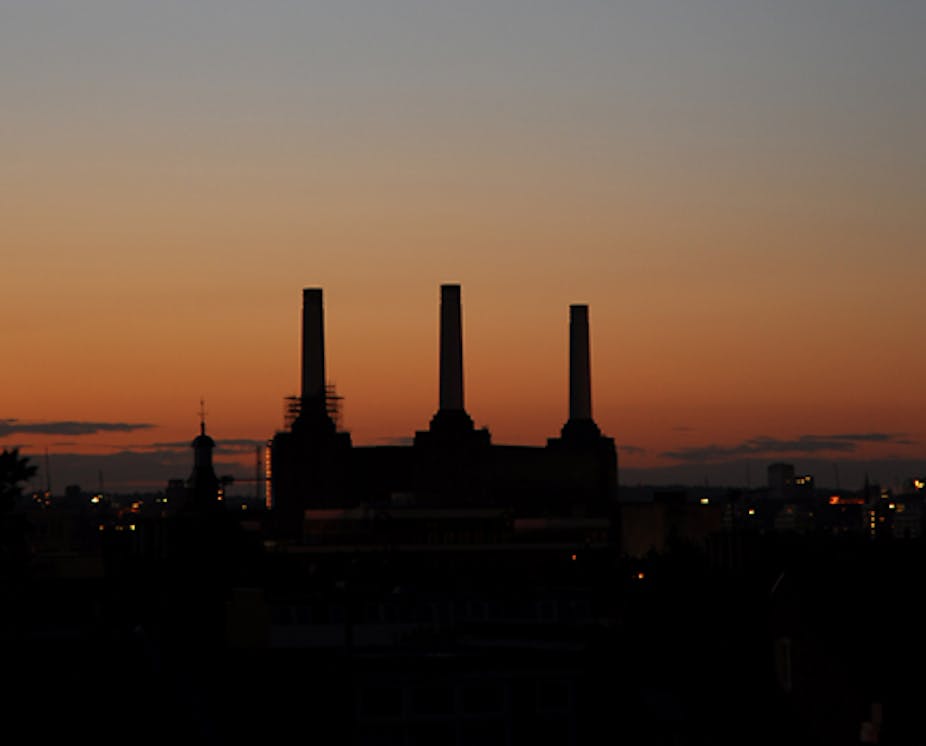New fossil-fuel power plants that nobody wants to pay for, electricity companies saying power prices will go through the roof: the economy of generating electricity is a complicated business.
Last week, EPA Victoria (the state’s environment protection authority) approved a new coal and gas fired power station at Morwell in the LaTrobe Valley. The proposal for the station comes from HRL, an Australian-owned company with energy, technology and project-management interests.
On Saturday, The Age reported that none of the big banks were planning on financing the HRL plant.
The following day, The Age reported that TRUnergy, which generates 10% of Australia’s electricity, claimed that a price on carbon will lead to a doubling of power costs in six years.
Is the proposed carbon price, and uncertainty as to what the price will be, making coal fired power stations unviable? Does that drive up electricity prices?
We’ve already seen a 30% increase in retail electricity prices in the last few years in Australia. So what has been driving up the price of electricity so far, and what can we expect in the future?
A report from the University of Melbourne discusses the costs of renewable energy and how they might change over the next 40 years.
The report shows that the electricity price required for a new coal or gas-fired power station to break even is around $80/MWh. Current spot market prices average around $40/MWh.
So, no surprises why the banks aren’t leaping forward to fund the new HRL plant, even if it will be state-of-the-art and produce 30% less emissions than other coal plants in the neighbourhood.
But why would HRL even apply for a permit if the situation is so hopeless for their proposed plant?
Much of Australia’s, and especially Victoria’s, coal fired capacity is getting very long in the tooth. Hazelwood and Yallourn stations provide 30% of the state’s capacity and are both past or nearing their use-by date.
These old stations have essentially been paid for, and are now running on just operation and maintenance costs and can bid in to the spot market at very low prices. But eventually the old plants will be retired, new plants (either fossil or renewable) will have to be built and financed, and financing costs money.
So even without climate change and a carbon tax, as the old plants are retired and new infrastructure is built to replace the old, we will see a substantial increase in electricity prices.
HRL would appear to be aiming to be ahead of the game, even if they run at a loss initially.
In Australia, the 30% increase in retail electricity prices (or an increase of around 7c/kWh) has taken place before we have a carbon price. What’s going on there?
Some of this is due to the increase in wholesale prices. In the last 10 years, wholesale electricity prices have increased by about 1c/kWh, driven by increase in demand.
Plus, retailers now have to buy renewable energy certificates (RETs) to comply with the 20% renewables by 2020 target. In 2009, 8.8 million RETs were surrendered by the energy retailers, at a cost of around $350 million.
It sounds like a lot, but averaged over the 220 TWh (terawatt hours) we use, it’s only 0.2c/kWh. So there’s 1.2 cents out of 7 cents explained.
The rest is due to transmission and distribution costs, which are independent of the cost of generating the power in the first place.
Transmission and distribution costs are going up because demand is going up. The average demand is increasing as the population increases, and in Victoria has gone from 5.3 GW in 2000 to 5.9 GW in 2009, but the maximum demand has gone from 7.7 GW in 2000 to 10.5 GW in 2009 (an increase of 35%).
This is the demand on the hottest summer days, and the increase is mainly due to increased use of air-conditioners.
The distribution system has to expand to cope with this extreme demand (even if it only happens once a year), and distribution is a significant part of the cost of electricity.
If (or when) we get a carbon price, what impact will that really have on generation costs? Coal fired power stations in Victoria produce around 1.4 tonnes of CO2 for each megawatt hour (MWh) of electricity produced, which they sell on the wholesale market for around $40.
So, if we have a carbon price and generators are paying around $25 for each tonne of CO2, then the price will go up by $35/MWh, or 3.5c/kWh.
So, yes, electricity prices will increase in the future. But increased generating and distribution costs are the main drivers, due to an aging fleet of power plants and a change in the demand pattern which is increasing the distribution capacity requirements.
A carbon price will have a relatively small impact on consumers, but will make the most polluting plants less attractive to investors, driving an initial move to gas, and then renewables if the carbon price goes high enough.
More expensive electricity will make efficiency measures more attractive – it may be time to look at those halogen bulbs, getting rid of the second fridge or swapping the electric hot water system for a solar system. It could save you a packet in the long run.
Details on the Melbourne Energy Institute Seminar series can be found at www.energy.unimelb.edu.au.

